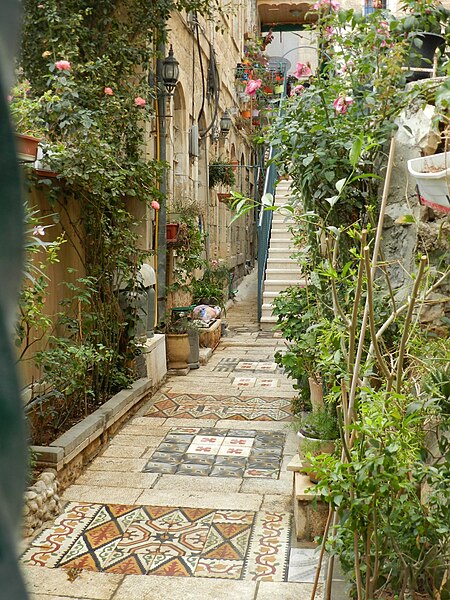Musrara is a formerly Ottoman neighborhood in what is now West Jerusalem. It is bordered by the Israeli neighborhoods of Mea Shearim and Beit Yisrael to the north, by the Russian Compound and Kikar Safra to the west, and by Mamilla mall to the south, and the Old City to the east.
Home in Musrara
Musrara, 1934-1939
"They're not nice" alley, Musrara
Architecture in Musrara
West Jerusalem or Western Jerusalem refers to the section of Jerusalem that was controlled by Israel at the end of the 1948 Arab–Israeli War. As the city was divided by the Green Line, West Jerusalem was formally delineated as the counterpart to East Jerusalem, which was controlled by Jordan. Though Israel has controlled the entirety of Jerusalem since the 1967 Arab–Israeli War, the boundaries of West Jerusalem and East Jerusalem remain internationally recognized as de jure due to their significance to the process of determining the status of Jerusalem, which has been among the primary points of contention in the Arab–Israeli conflict and the Israeli–Palestinian conflict. With certain exceptions, undivided Jerusalem is not internationally recognized as the sovereign territory of either Israel or the State of Palestine. However, recognition of Israeli sovereignty over only West Jerusalem is more widely accepted as a plausible diplomatic position, as the United Nations regards East Jerusalem as part of the Israeli-occupied West Bank.

Zones of control in Jerusalem between 1948 and 1967
William McLean's 1918 plan was the first urban planning scheme for Jerusalem. It laid the foundations for what became West Jerusalem and East Jerusalem.
Palmach soldiers attack Arab positions at St Symeon ("San Simon") Monastery in Katamon, Jerusalem, April 1948 (battle reconstruction)







